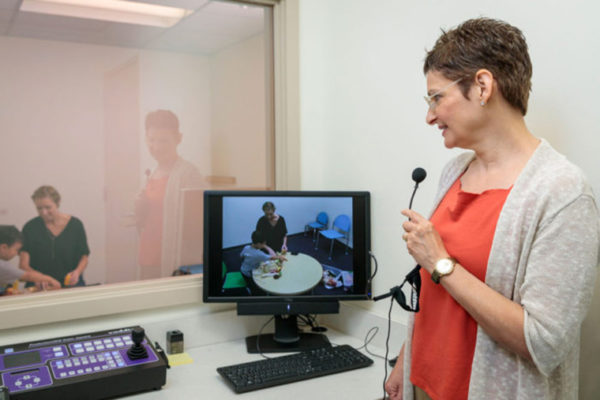As the opioid epidemic has worsened in the United States, prevalence of hepatitis C has also increased. Hepatitis C is a bloodborne virus that damages the liver. It is mainly spread through sharing needles or other injection equipment and can also be passed from a mother to baby during pregnancy or childbirth. It can be safely and effectively treated by direct-acting antiviral therapies that are approved for both adults and children.
Two recent studies from researchers at Washington University School of Medicine in St. Louis reveal that two vulnerable populations — children and recently pregnant women — face disparities in access to treatment for hepatitis C infection. Without treatment, these groups are at risk of long-term adverse health outcomes such as cirrhosis, liver cancer and death.
One study, published in Pediatrics in collaboration with researchers at Massachusetts General Hospital, found that few children with hepatitis C were referred for care. This study also revealed that there were significant disparities in whether these patients were provided care and treatment for their infection depending on a child’s race, geographic location and age. A second study, led by WashU Medicine researchers and published July 10 in Obstetrics & Gynecology Open, showed that recently pregnant women with the hepatitis C virus were significantly less likely to receive hepatitis C treatment than men or women who had not been recently pregnant.
“We have treatments for hepatitis C where it’s just two or three months of pills and then over 95% of people are cured,” said Megan Curtis, MD, an assistant professor in the Division of Infectious Diseases in the John T. Milliken Department of Medicine at WashU Medicine, who led both studies. “But we are still having difficulties in getting the treatments to the populations that need them the most. These kinds of studies can help us identify where those barriers are.”
Disparities in hepatitis C treatment for children
Curtis has focused her research on identifying which patients experience gaps in access to hepatitis C treatment. Using anonymized data from a national database, she identified 928 pediatric patients who tested positive for hepatitis C between 2000 and 2022.
In the study published in Pediatrics, Curtis found that only about one in eight of these children were treated for hepatitis C, but that ratio was affected by certain factors. Children born between 2014 and 2018 were more likely to be treated than were those born earlier, which likely reflects changes in Medicaid and insurance coverage during that period, as well as increased availability of treatment for younger children in later years. However, this group’s rate of treatment was still much lower than that of adult patients with hepatitis C.
The study found racial and ethnic disparities as well. Compared to Black children, Hispanic children had about twice the odds and White children had about three times the odds of receiving care for hepatitis C. Geographic region also played a role in disparities: Children with hepatitis C living in the South were least likely to receive treatment compared to those in other regions of the country.
Although these differences may stem largely from socioeconomic disparities in access to health care and regional availability of providers, Curtis noted that other factors can also contribute to low overall treatments rates among children.
“Parents might also delay because of the difficulty of administering a medicine to a young child,” she said, “and clinicians may delay treatment because some children who have hepatitis C will spontaneously clear it on their own. However, this isn’t always the case.”
Treatment for recently pregnant women lags
Hepatitis C infections have been increasing in people with opioid use disorders. Within that population, men have been shown to be more likely to receive treatment for hepatitis C than women are. To understand why, Curtis, in collaboration with Kevin Xu, MD, an assistant professor of psychiatry and co-senior author of the study in Obstetrics & Gynecology Open, and their team set out to see if pregnancy might be playing a role in these sex disparities.
Given that people with opioid use disorder are at risk of contracting hepatitis C, the researchers used an administrative claims database and similar epidemiologic methods as in the pediatric study to analyze data on patients in treatment for opioid use disorder who were also confirmed to have hepatitis C. They found that recent pregnancy was strongly associated with a lower likelihood of receiving treatment for hepatitis C. Recently pregnant patients with hepatitis C were almost 30% less likely to receive antivirals than men were (31.8% versus 40.6%, respectively), and about 11% less likely than women who were not recently pregnant (31.8% versus 35.7%).
Caroline Cary, a third-year medical student at WashU Medicine who is the first author on the study, said the results suggest that more resources are needed to reach patients who are likely to slip through the cracks.
“People with hepatitis C are often asymptomatic for years after being exposed, so if you are young, otherwise healthy and have a new baby, getting prompt treatment may not be a top priority, especially if it is challenging to access,” said Cary. “It’s imperative to make hepatitis C care more readily accessible to new moms considering the long-term consequences of the condition.”
For Curtis, it’s a troubling problem because treatments for hepatitis C are very effective when started early and taken consistently.
“We need to come up with better strategies for addressing hepatitis C,” she said. “We have all the tools to eliminate it. We have medications that can treat it. We know the people who need to get it. We just need to step up the availability and the awareness. We could be done with hepatitis C in a generation.”
Curtis MR, Munroe S, Biondi BE, Ciaranello AL, Linas BP, Epstein RL. Disparities in linkage to care among children with Hepatitis C virus in the United States. Pediatrics. April 18, 2025. DOI: 10.1542/peds.2024-068565
This work was funded by the National Institutes of Health grant numbers T32AI052074, T32AI007433, National Institute of Drug Addiction P30DA040500 and 1K01DA052821, the James and Audrey Foster MGH Research Scholar Award, the Charles A. King Trust Postdoctoral Research Fellowship, the Providence and Boston Center for AIDS Research P30AI042853, the Boston University Clinical and Translational Science Institute 1UL1TR001430, and a Boston University Chobanian & Avedisian School of Medicine Department of Medicine Career Investment Award. The content is solely the responsibility of the authors and does not necessarily represent the official views of the NIH.
Cary CB, McCrary LM, Marks LR, Kelly JC, Hartz SM, Hayibor L, Grucza RA, Xu KY, Curtis MR. Association between sex and recent pregnancy and hepatitis C virus treatment in people with opioid use disorder. Obstetrics & Gynecology Open. July 10, 2025. DOI: 10.1097/og9.0000000000000096
This work was funded by the National Institutes of Health grant numbers K12DA041449, K08DA061258, P50 MH122351, R21 DA057493, R01 HD113199, and R61 DA06232. The content is solely the responsibility of the authors and does not necessarily represent the official views of the NIH.
About Washington University School of Medicine
WashU Medicine is a global leader in academic medicine, including biomedical research, patient care and educational programs with 2,900 faculty. Its National Institutes of Health (NIH) research funding portfolio is the second largest among U.S. medical schools and has grown 83% since 2016. Together with institutional investment, WashU Medicine commits well over $1 billion annually to basic and clinical research innovation and training. Its faculty practice is consistently within the top five in the country, with more than 1,900 faculty physicians practicing at 130 locations. WashU Medicine physicians exclusively staff Barnes-Jewish and St. Louis Children’s hospitals — the academic hospitals of BJC HealthCare — and treat patients at BJC’s community hospitals in our region. WashU Medicine has a storied history in MD/PhD training, recently dedicated $100 million to scholarships and curriculum renewal for its medical students, and is home to top-notch training programs in every medical subspecialty as well as physical therapy, occupational therapy, and audiology and communications sciences.
Originally published on the WashU Medicine website



